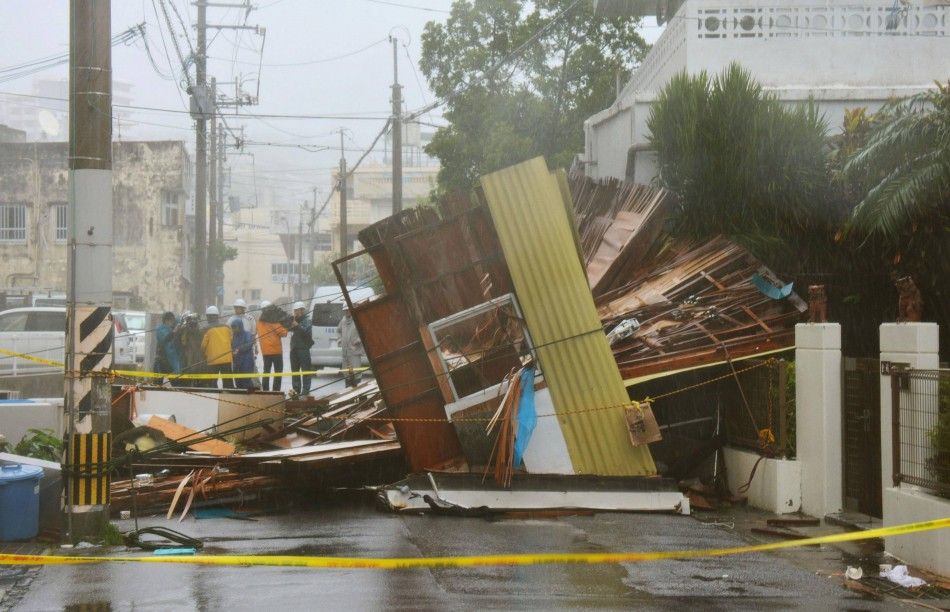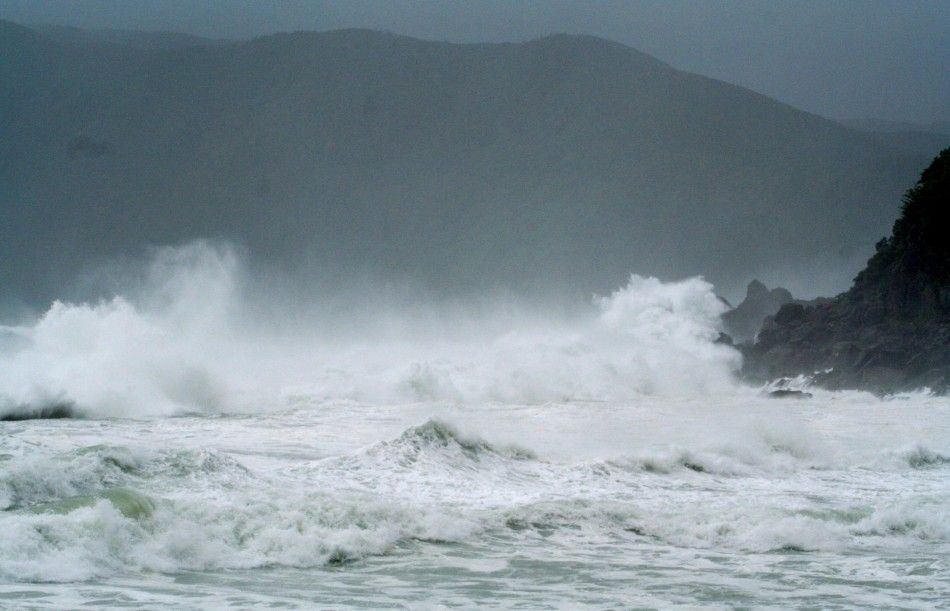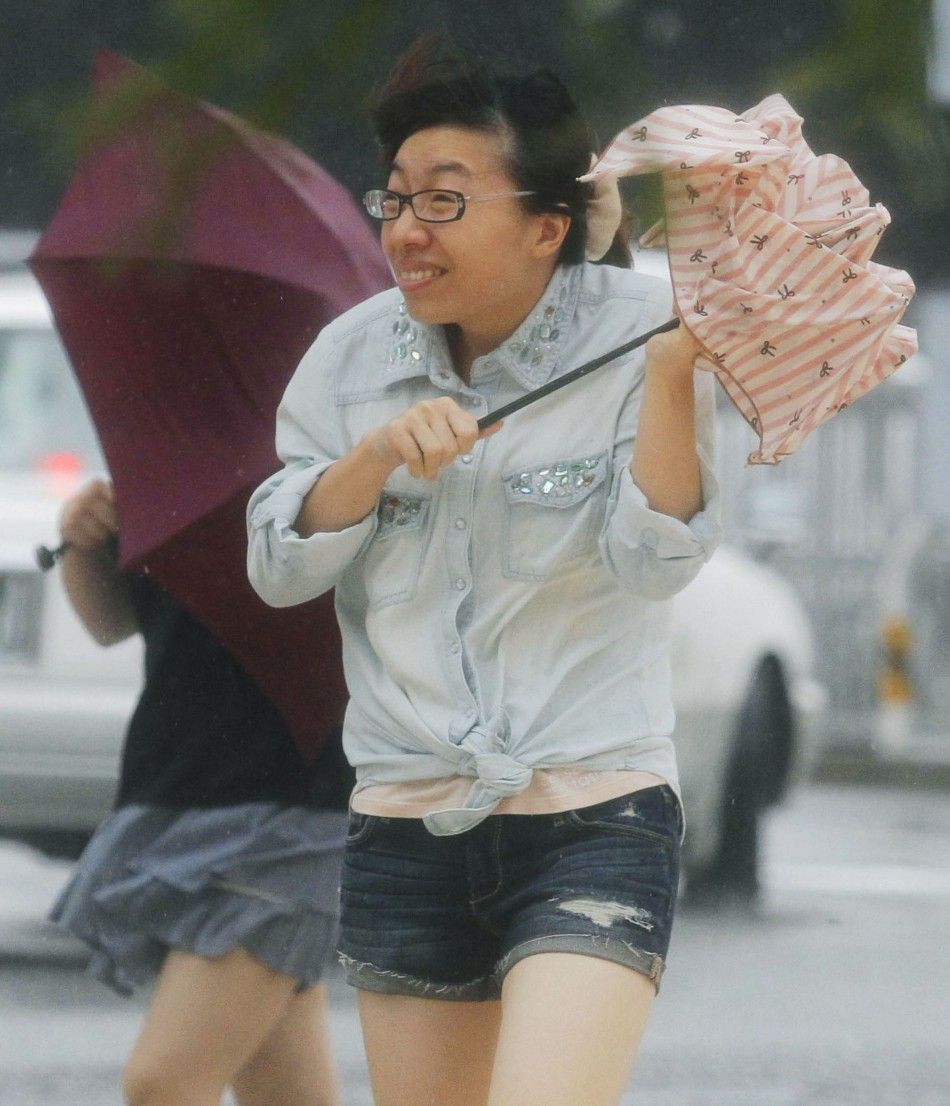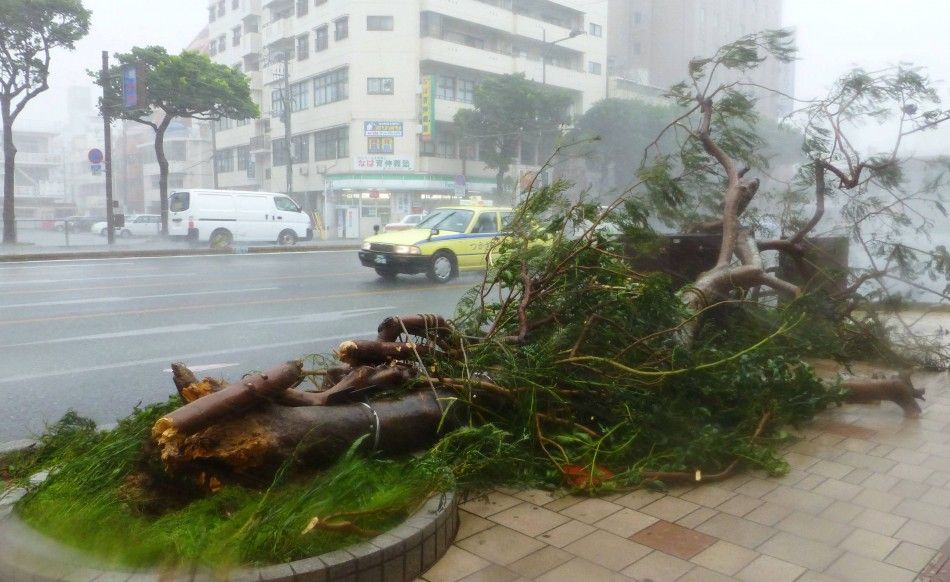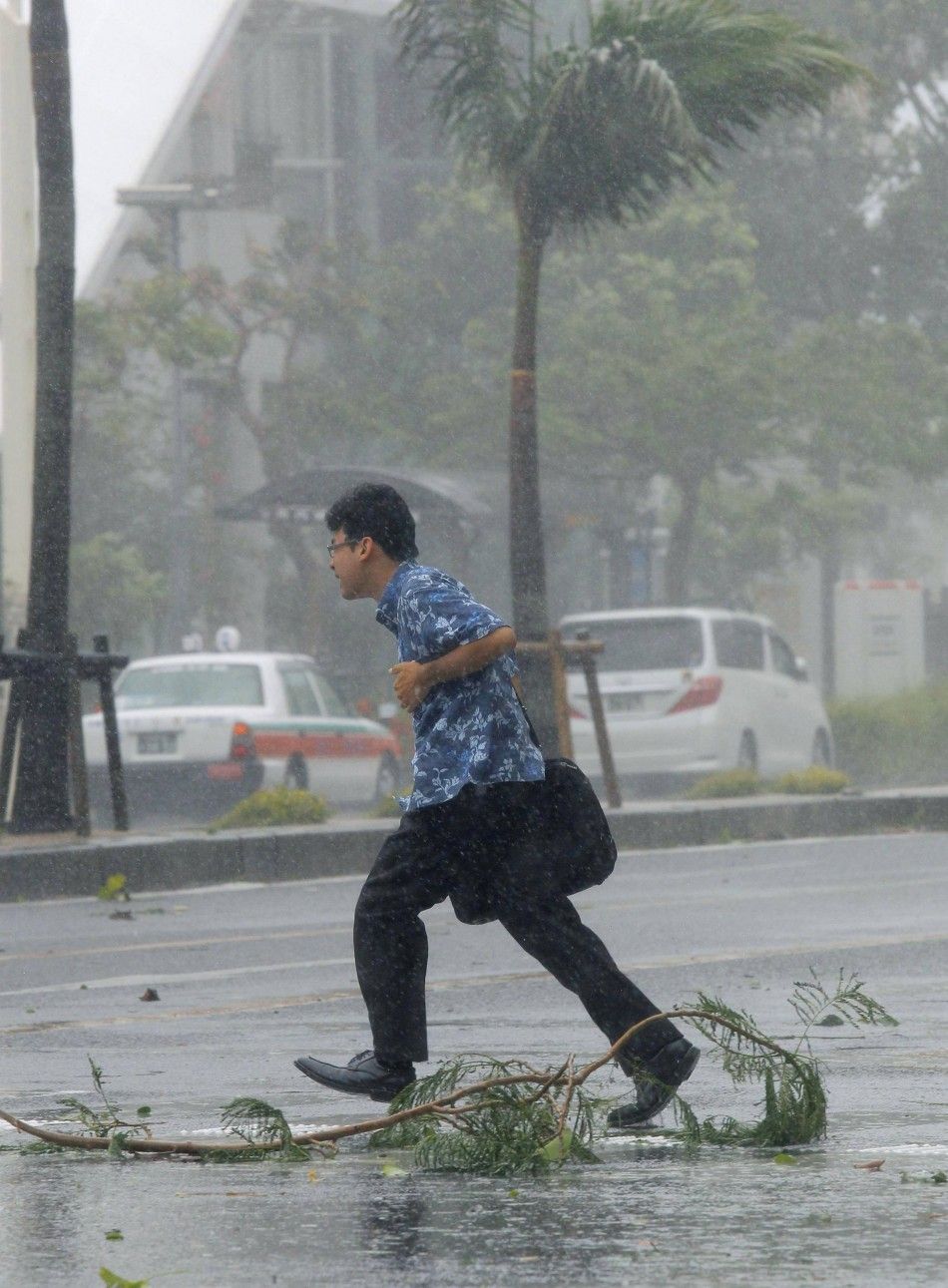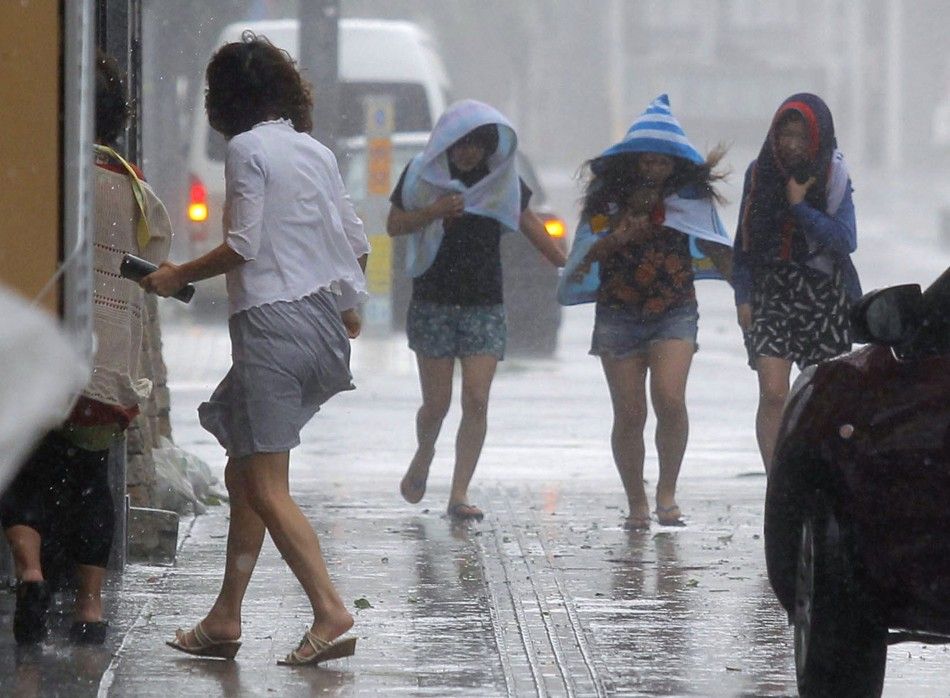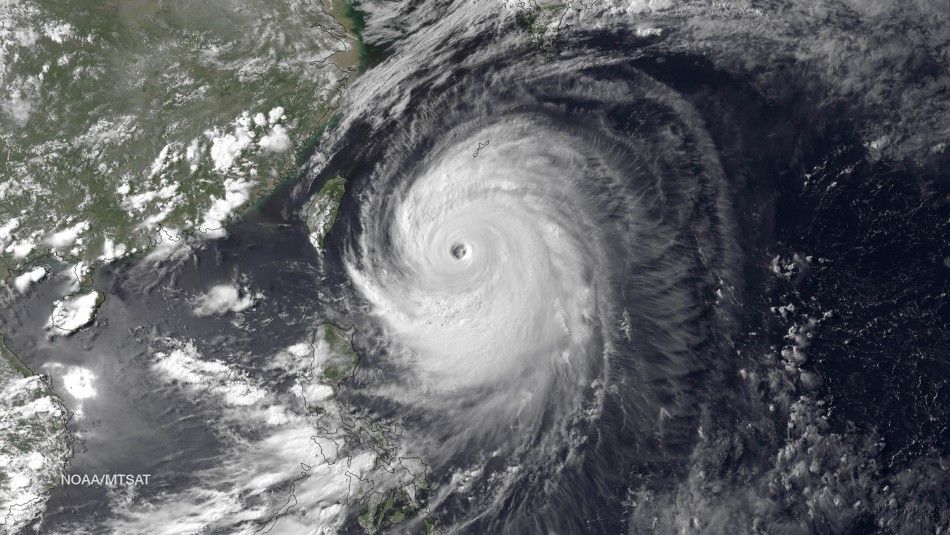Typhoon Neoguri: 2 Dead, Forces Flights Cancellation, Cuts Electricity and Water Supplies (PHOTOS)
Typhoon Neoguri, weakened from an original super typhoon category, has killed at least two people, forced the cancellation of hundreds of flights and has cut the supply of electricity and water to the people of Japan.
Concerns are also up in Kyushu, next in the line of path of Neoguri, and for the two nuclear plants on Kyushu, as well as that on Shikoku island, which borders Kyushu.
"We have no water or electricity, but the gas is still on," Takuro Ogawa, who lives in Chatan, a town in central Okinawa, told AFP.
Public broadcaster NHK said at least 70,000 Okinawan households currently have no access to power supplies.
"We have not received any information concerning great damage or injury. The prime minister [Shinzo Abe] has ordered the government to provide information to our citizens and to prepare thoroughly for any disaster and to respond quickly if anything is to happen," NHK quoted Chief Cabinet Secretary Yoshihide Suga.
Read: Super Typhoon Neoguri Update: Okinawans Urged to Relocate; Expect Massive Wind Damages, Flooding; JMA Raises Highest Alert; Kadena Air Force Base at Risk
NASA astronaut Reid Wiseman tweeted some amazing pictures of the eye of Typhoon Neoguri.
#Neoguri has been literally cut in half. Unreal. pic.twitter.com/UIwYfBRi0H
— Reid Wiseman (@astro_reid) July 8, 2014
The interesting shaped #eye of super #TyphoonNeoguri - 2155 GMT, 7 July pic.twitter.com/raNonr8qbK
— Reid Wiseman (@astro_reid) July 7, 2014
#Typhoon Neoguri nearing Japan. Takes up our entire view. Wow. pic.twitter.com/dQEa1m2i7b
— Reid Wiseman (@astro_reid) July 5, 2014
On the other side of the world, #Typhoon Neoguri builds pic.twitter.com/OsYjWa98uN
— Reid Wiseman (@astro_reid) July 4, 2014
#Hurricane #Arthur through a 10.5mm fish eye lens. Amazing to see nature at work. pic.twitter.com/iGM0Izw1DC
— Reid Wiseman (@astro_reid) July 4, 2014
About 168 flights to and from Okinawa were canceled by Japan Airlines and its affiliates, affecting 14,000 passengers. Another 14,000 passengers were likewise affected when the All Nippon Airways group pushed back 110 flights.
Read: Japan Advised to Brace for Neoguri, 2014's First Super Typhoon; Okinawa Will Receive Worst Impact
In an advisory at 11 a.m. New York time, the U.S. Navy's Joint Typhoon Warning Center said the top winds of Neoguri, which means raccoon in Korean, had dropped to 195 kilometres (121 miles) per hour from 204 kph.
"The storm is clearly weakening," Jum Andrews, a meteorologist with AccuWeather.com, said. "We're thinking more a minimal typhoon or a strong tropical storm as it crosses the southwest coast of Kyushu."
Despite it being downgraded early Tuesday from a super typhoon, typhoon Neoguri is still packing wind gusts of up to 250 kilometres per hour.
But authorities are concerned for Kyushu, the southernmost of Japan's main islands, which had actually already experienced heavy rains in recent days.
"This is not about wind, it's all about rainfall," CNN International meteorologist Tom Sater said, noting the rivers and the ground in Kyushu are already saturated and swollen.
"Heavy rains causing major flooding will be the main concern, due to saturated soils on Kyushu caused by very heavy rains since Thursday from a stalled front," Jeff Masters of Weather Underground told Bloomberg.
"It is expected to remain at strong intensity for the next three days at least," the AFP quoted World Meteorological Organisation spokeswoman Clare Nullis in a UN briefing in Geneva, noting Neoguri was not as powerful as Haiyan, but "its impact is not to be underestimated."
Typhoon Haiyan, 2013's strongest tropical cyclone, killed over 7,300 people in the central Philippines in November. It is the strongest storm recorded at landfall, and unofficially the strongest typhoon ever recorded in terms of wind speed.
